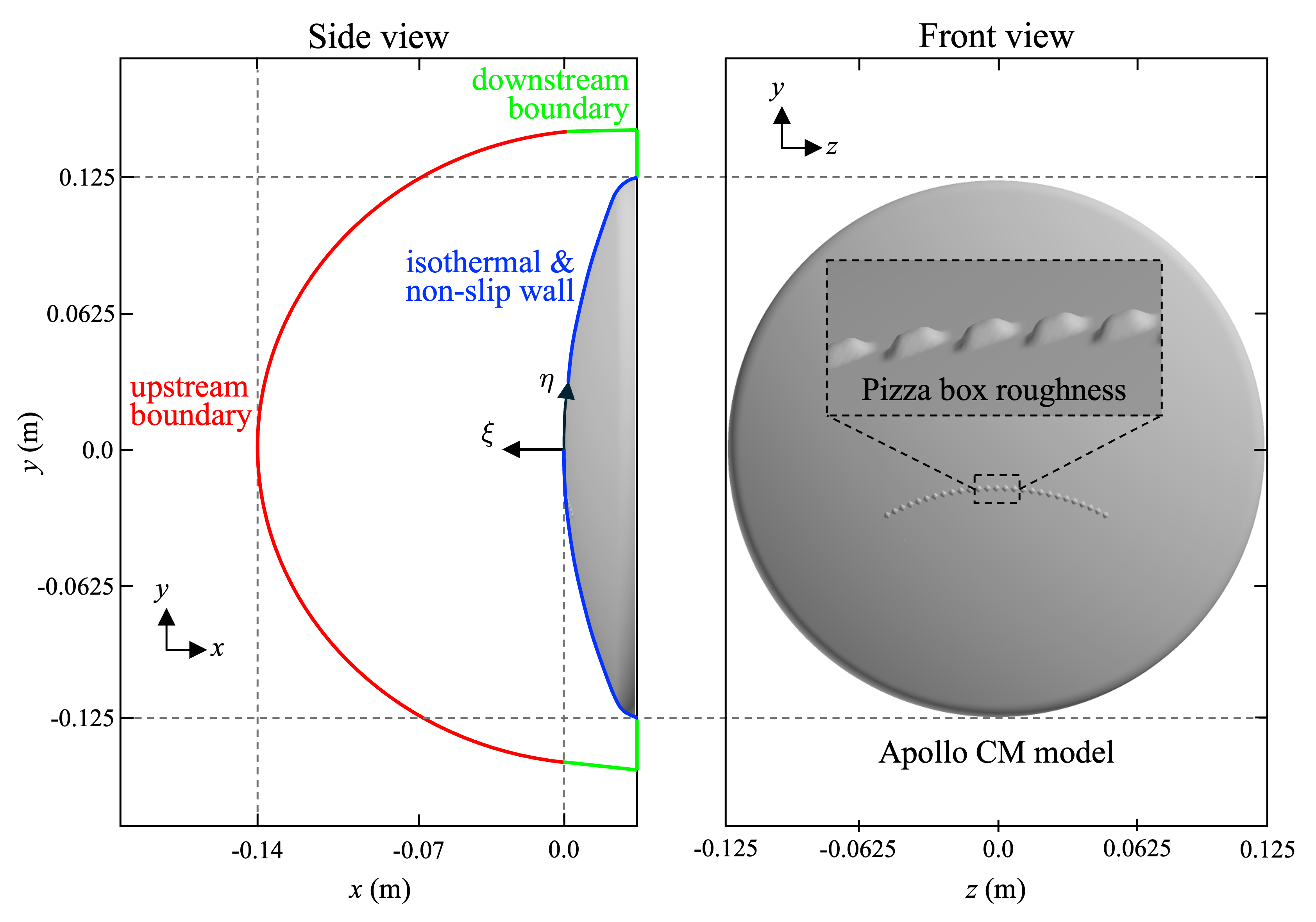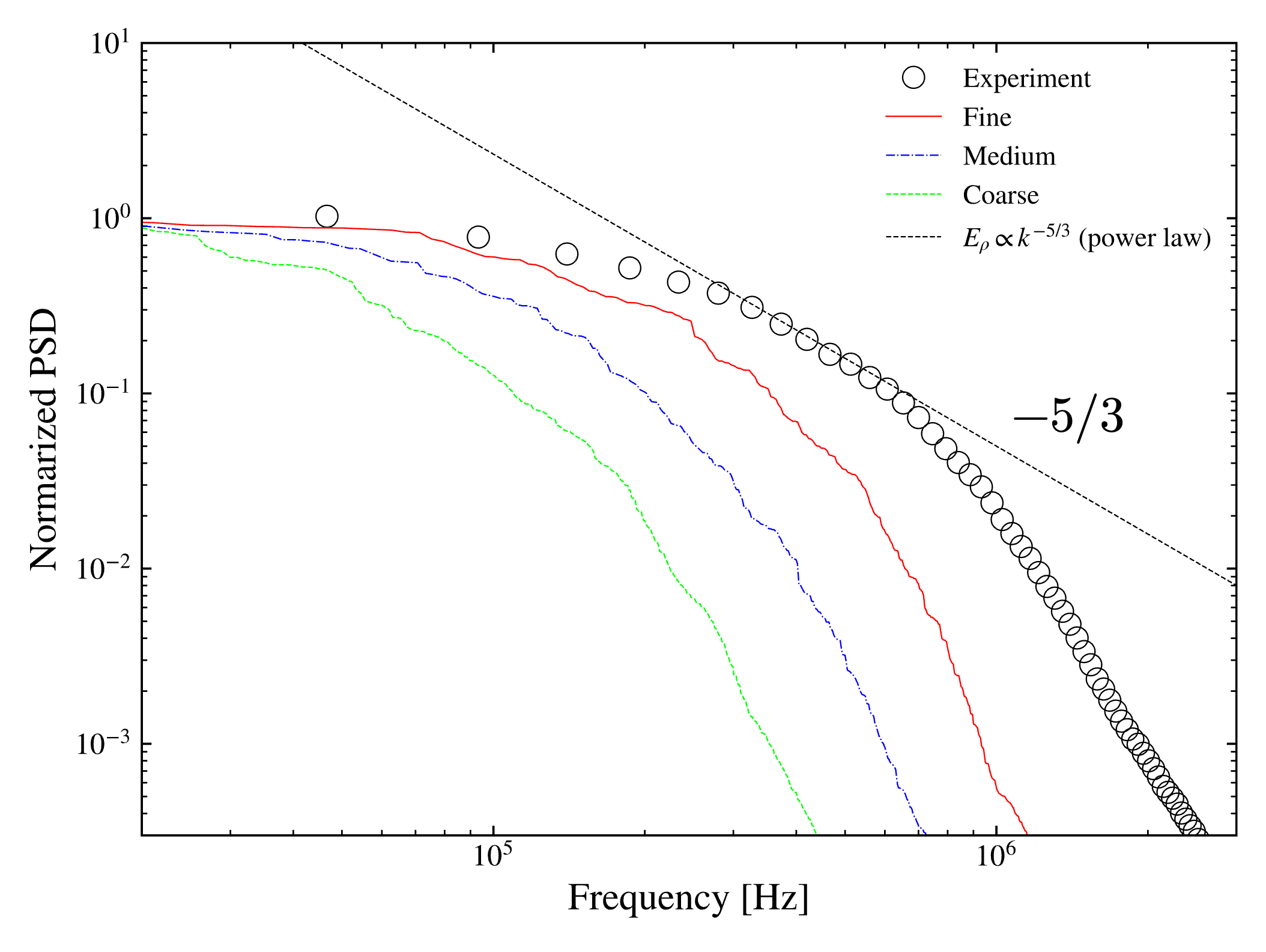Numerical Simulation on Hypersonic Boundary Layer
JAXA Supercomputer System Annual Report February 2024-January 2025
Report Number: R24EEG60100
Subject Category: Research and Development
- Responsible Representative: Shuto Yatsuyanagi, Research and Development Directorate, Research Unit IV
- Contact Information: Shuto Yatsuyanagi(yatrsuyanagi.shuto@jaxa.jp)
- Members: Shuto Yatsuyanagi
Abstract
The boundary layer transition is a critical phenomenon in the design of the thermal protection system (TPS) for re-entry capsules. The heat transfer coefficient of a turbulent boundary layer can be several times higher than that of a laminar boundary layer, in some cases exceeding the stagnation point heat flux. Traditional TPS designs are extremely conservative, assuming turbulent boundary layers throughout the flight path. Until the accuracy of turbulent heat flux predictions improves, excessive TPS weight must be tolerated. If turbulent heat flux prediction methods can be established through wind tunnel testing and numerical simulation, it may be possible to reduce the TPS design margin, which accounts for a significant portion of the vehicle weight. The objective of this project is to establish numerical simulation methods capable of quantitatively predicting the turbulent heat flux for re-entry vehicles and to provide insights that will contribute to TPS weight reduction.
Reference URL
N/A
Reasons and benefits of using JAXA Supercomputer System
Since the laminar-turbulent transition is closely related to the growth process of flow disturbances, its numerical simulation requires high spatio-temporal resolution. To achieve numerical simulations with high spatio-temporal resolution, it is essential to use a large amount of computational resources such as JSS3.
Achievements of the Year
Numerical simulations of turbulent transitions induced by isolated roughness elements were conducted for the Apollo Command Module (CM) model (Figure 1). To confirm the validity of the numerical simulations, comparisons were made with experimental data on density fluctuations.
Figure 2 shows the snapshot of Q-value isosurface (Q=1e-4) colored by temperature at 9.2 MJ/kg condition. It is clear that many hairpin vortex structures exist in the flow field and that they develop rapidly in the wake of the isolated roughness.
Figure 3 shows the density fluctuation spectra obtained at the midstream position ((x, y, z) = (0.001,0,0)) of the Apollo CM model. Each Power Spectru Density (PSD) is normalized by the PSD value at 10 kHz. Although grid convergence was not obtained for the three different computational grids, the numerical results were approaching to the experimental value as the grid resolution was increased.
Publications
- Peer-reviewed papers
Yatsuyanagi S. et al., Direct Numerical Simulation and Optical Measurement of Disturbance Growth over a Blunt Body, AIAA paper 2025-1113, 2025.
- Oral Presentations
1) Shuto Yatsuyanagi, Hideyuki Tanno, Direct Numerical Simulation on Disturbance Growth over a Blunt Body in High-temperature Hypersonic Flow, 56th Fluid Mechanics Conference / 42nd Aerospace Numerical Simulation Technology Symposium, Kagoshima, (2024).
2) S. Yatsuyanagi and H. Tanno, Numerical Investigation of Disturbance Growth on a Blunt Body in High Enthalpy Hypersonic Flow, Twelfth International Conference on Computational Fluid Dynamics, ICCFD12-2024-A00170, Kobe, (2024).
3) S. Yatsuyanagi and H. Tanno, Direct Numerical Simulations on Disturbance Growth in High-Enthalpy Hypersonic Flows with Freestream Disturbances, IUTAM Symposium on Laminar-Turbulent Transition, Nagano, (2024).
4) Shuto Yatsuyanagi, Hideyuki Tanno, A Study of Boundary Layer Transition Using a High Enthalpy Shock Tunnel Part 2, JSFM Annual meeting 2024, Sendai, (2024).
5) Shuto Yatsuyanagi, Hideyuki Tanno, Boundary Layer Transition in High-Temperature Hypersonic Flow Part 2, 62nd Aircraft Symposium, Fukui, (2024).
6) Shuto Yatsuyanagi, Hideyuki Tanno, Recent progress in the high-enthalpy shock tunnel HIEST to obtain turbulent heat flux for a re-entry capsule, 68th Space Science and Technology Union Lecture Meeting, Himeji, (2024).
7) Shuto Yatsuyanagi, Hideyuki Tanno, Numerical simulation of boundary layer transition over a re-entry capsule, 37th CFD symposium,Tokyo, (2024).
8) Shuto Yatsuyanagi, Hideyuki Tanno, Direct Numerical Simulation of Boundary Layer Transition by Isolated Roughness on Blunt Body: Investigation of Appropriate Spatial Resolution, Symposium on Shock Waves in Japan, Sendai, (2024).
Usage of JSS
Computational Information
- Process Parallelization Methods: MPI
- Thread Parallelization Methods: N/A
- Number of Processes: 912 - 3264
- Elapsed Time per Case: 72 Hour(s)
JSS3 Resources Used
Fraction of Usage in Total Resources*1(%): 2.36
Details
Please refer to System Configuration of JSS3 for the system configuration and major specifications of JSS3.
| System Name | CPU Resources Used(Core x Hours) | Fraction of Usage*2(%) |
|---|---|---|
| TOKI-SORA | 64563821.83 | 2.95 |
| TOKI-ST | 30.42 | 0.00 |
| TOKI-GP | 0.00 | 0.00 |
| TOKI-XM | 0.00 | 0.00 |
| TOKI-LM | 22.42 | 0.00 |
| TOKI-TST | 0.00 | 0.00 |
| TOKI-TGP | 0.00 | 0.00 |
| TOKI-TLM | 0.00 | 0.00 |
| File System Name | Storage Assigned(GiB) | Fraction of Usage*2(%) |
|---|---|---|
| /home | 0.00 | 0.00 |
| /data and /data2 | 15310.50 | 0.07 |
| /ssd | 0.00 | 0.00 |
| Archiver Name | Storage Used(TiB) | Fraction of Usage*2(%) |
|---|---|---|
| J-SPACE | 0.00 | 0.00 |
*1: Fraction of Usage in Total Resources: Weighted average of three resource types (Computing, File System, and Archiver).
*2: Fraction of Usage:Percentage of usage relative to each resource used in one year.
ISV Software Licenses Used
| ISV Software Licenses Used(Hours) | Fraction of Usage*2(%) | |
|---|---|---|
| ISV Software Licenses(Total) | 0.00 | 0.00 |
*2: Fraction of Usage:Percentage of usage relative to each resource used in one year.
JAXA Supercomputer System Annual Report February 2024-January 2025





